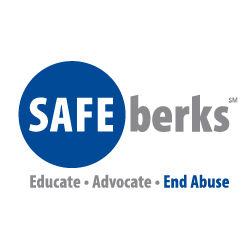Safe Berks 24-Hour Hotline: 844-789-SAFE (7233) or text SAFE BERKS to 20121
Safe Berks stands in sympathy and solidarity with the family, friends and neighbors of Joy Strunk, 62, of Oley Township, who was brutally murdered outside her Oley Township home on July 9, 2019, according to multiple news sources.
Joy Strunk is no longer here to tell her story. She was murdered by a single gunshot wound to her head. She was found dead on the driveway of her home; her home was on fire. Her husband, Stefan Strunk, fatally shot himself soon after the arrival of the first firefighter. Authorities believe Stefan Strunk murdered his wife, set their house on fire, and then committed suicide.
This tragic crime does not stand alone.
According to our records, 62 Berks County residents were killed by domestic violence between 1999 and 2019. Each October, Safe Berks honors and remembers these Berks County victims of domestic violence at our annual Silent Witness March & Dedication. According to the Pennsylvania Coalition Against Domestic Violence (PCADV), 122 people in Pennsylvania were killed in 2018 by domestic violence. Of those 122 victims, 71 were shot. Of those 122 victims, 27 were cases of murder-suicide. According to the PCADV, during the past 10 years, 1,168 people in Pennsylvania were murdered by domestic violence.
More than 10 million people are abused each year in the United States. One in four women and one in seven men are victims of domestic violence in their lives.
Safe Berks, formerly known as Berks Women in Crisis, provides free services to survivors of domestic violence and sexual assault. Last year, Safe Berks served more than 4,000 clients. Our Safe House provided safe housing to approximately 800 people, including 400 children.
End the Stigma
In order to prevent abuse and save lives, we need an open and honest discussion about domestic violence in our community. We need to end the stigma that surrounds domestic violence. This stigma causes victims to live in fear and silence. This stigma protects abusers. We need to make sure everyone understands that no one deserves to be abused, and that compassionate, free help is available 24/7.
By talking openly about domestic violence, we can help victims find assistance, and lives can be saved. We need to stop thinking about domestic violence as a personal, private issue, and understand that domestic violence is a community issue. This violence affects all of us, at our jobs, in our schools, and in our neighborhoods. We welcome the help of all members of the Berks community to end domestic violence. To contact the Safe Berks office, call 610-373-1206 or email P[email protected]. Information is also available on our website at www.SafeBerks.org, as well as on Facebook, LinkedIn, Twitter and Instagram. We welcome your assistance as a volunteer, donor and advocate.
Safe Berks Provides Help to Domestic Violence Survivors 24/7
Safe Berks is the non-profit in Berks County that is dedicated to providing free services to survivors of domestic violence and sexual assault, as well as to the significant others affected by these crimes. Safe Berks services are free, confidential, and available 24 hours a day, 365 days a year, in English and Spanish, and will be translated into any other language needed. We also provide free education and outreach to prevent these crimes.
Founded in 1976 as Berks Women in Crisis, we changed our name to Safe Berks in 2016 to make sure it is very clear that we serve all victims of domestic violence and sexual assault; women, men and children. While we are located in Reading, our services are available to all Berks residents.
Our 24-Hour Hotline number is 844-789-SAFE (7233), or text SAFE BERKS to 20121. Safe Berks services include a Safe House for adults and children who are in danger, individual and group counseling, and legal services and advocacy, including assistance with Protection From Abuse orders.
Lethality Assessment Program (LAP)
Safe Berks works closely with local police departments to serve survivors of domestic violence and sexual assault. Our Legal Department provides training to police departments on how to utilize the Lethality Assessment Program (LAP). This tool can help police identify situations where violence can quickly become lethal. For more info about LAP or to request training, call 610-373-1206 or email [email protected].
Additional Information about Domestic Violence
Signs of Domestic Violence and Abuse
It can be very difficult to acknowledge that you yourself, or someone you are close to, is experiencing relationship or family violence.
Abusers go to great lengths to control their victim, their interactions, and everyday life. Common indicators of abuse include:
- Name calling or demeaning comments
- Someone that seems too good to be true early in a relationship; the relationship may advance very quickly
- Frequent phone calls or texts
- Threatens to harm or kill you, your pet(s) or family members
- Blames you for the abusive behavior; does not take responsibility for actions
- Prevents you from spending time with family or friends and from enjoying hobbies and other activities
- Damages your credit by exceeding limits, purposely not paying bills, etc; may restrict your access to financial resources
Identifying abuse toward others
Knowing if someone you care about is in an abusive situation can be very difficult. But, there are some common warning signs:
- Their partner puts them down in front of other people
- They are constantly worried about making their partner angry
- They make excuses for their partner’s behavior
- Their partner is extremely jealous or possessive
- They have unexplained marks or injuries
- They’ve stopped spending time with friends and family
- They are depressed or anxious, or you notice changes in their personality
Abusers are skilled at using power and control over their victims, which can make leaving the situation difficult and dangerous. One of the best ways to help someone in abusive situation is to listen to them and support them. Try to help the person you care about feel empowered. Leave the decision making up to them. Help them understand that they are not responsible for, nor do they deserve the abuse. Encourage them to seek the help of an advocate or to contact Safe Berks.
Safety Planning
The Domestic Violence Resource Center offers the following advice on Safety Planning. More information, including English and Spanish Safety Planning Packets, are available on the Domestic Violence Resource Center website at: http://www.dvrc-or.org/safety-planning/
Safety planning is just what it sounds like: creating a plan to keep yourself and any children and/or pets safe while living in an environment of domestic violence and abuse, preparing to leave, leaving, and after leaving an abuser. A survivor’s safety and well-being are most at risk during episodes of violence and when attempting to leave an abuser, so it’s especially important to prepare ahead of time to be as protected as possible.
Safety During an Explosive Incident
- If an argument is unavoidable, stay in an area where you have access to an exit.
- Practice getting out of your home safely.
- Keep a packed bag at a trusted relative’s or friend’s home.
- Tell trustworthy neighbors about the violence. Ask them to call the police if they hear or see any disturbance.
- Devise a code word or signal to use with your children, family, friends, and trustworthy neighbors when you need the police.
- Plan where you will go if you have to leave.
- Trust your instincts and judgment. You have the right to protect yourself until you are out of danger.
Safety When Preparing to Leave
- Establish your independence. Open savings and credit card accounts in your name only.
- Leave money, extra keys, copies of important documents, extra medicine and clothes with someone you trust so you can leave quickly.
- Determine safe people you can stay with or borrow money from.
- Keep hotline phone numbers and change, a calling card, or a safety cell phone on you at all times for emergency phone calls. Most crisis lines do accept collect calls and 911 is free.
- Review and rehearse your safety plan.
Safety in Your Own Home
- If possible, obtain a Protection from Abuse (PFA) order.
- Change the locks on your doors. (Landlords are legally obligated to change locks within 24 hrs. if you are experiencing DV).
- Install locks on your windows. (Renters check with your landlord first.)
- Discuss and practice a safety plan with your children for when you are not with them.
- Inform your children’s schools or caregivers who has permission to pick up your children.
- Inform neighbors and landlord that your partner no longer lives with you and to call the police if they see him or her near your home.
Safety with a Restraining Order
- Keep your protective order on you at all times, and give a copy to a trusted neighbor, friend or family member.
- Call the police if your abuser violates the protective order.
- Think of alternative ways to keep safe if the police do not respond right away.
- Inform family, friends, neighbors and health care providers that you have a restraining order in effect.




